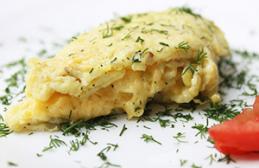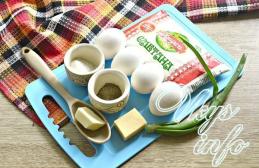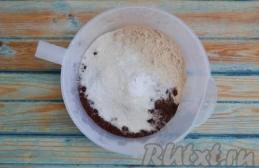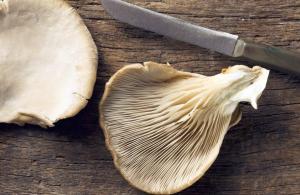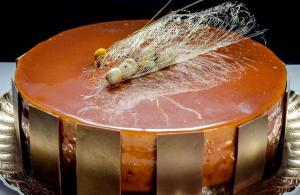Vodka is very often counterfeited. Statistics show that 46% of the domestic alcohol market is filled with “palenka”. Fortunately, there are a number of ways to distinguish “scorched” vodka from real one, which we will share with you.
Please note that only laboratory tests can give a 100% result. However, there are signs that will help you make the right choice without leaving the store counter.

Bottle:
- The label must indicate the full legal address of the plant, license number, certification mark, GOST and composition of the drink.
- The label must be evenly pasted, the color is bright and clear, the letters are readable.
- The bar code on the excise stamp must also be clearly printed.
- Often, clandestine workshops do not attach importance to the bottling date, which must coincide on the cap and label.
- The unusual shape of the bottle makes counterfeiting difficult
- Buy vodka with a dispenser, as it is more difficult to counterfeit in “handicraft conditions”. The cap should fit tightly on the bottle and not twist.

Content:
- Burnt vodka has a sediment; if you turn the bottle over, the liquid will become cloudy.
- Look at the contents through sunlight. Real vodka does not contain impurities, suspension, or foreign particles.
- If large bubbles form when shaking, then there is a lot of water in the vodka, which is not acceptable for a quality product.
- Classic vodka has a mild taste and does not have a pungent odor.
- The purer the alcohol, the better. Look for alcohol of the brands Lux, Eksta, Alpha.

Remember, purchasing counterfeit alcohol entails more than negative consequences. Be careful when purchasing, pay attention to small details that “underground” manufacturers often forget about. The most important thing is to know when to stop and don’t overdo it. Be healthy!
- a bottle of vodka cannot cost less than 100 rubles.
- Of course, when you shake the bottle in a spiral, a snake of small bubbles is formed inside
- 1 liter of vodka weighs exactly 953 grams, which means half a liter weighs 476 grams.
- vodka has a specific vodka smell and should not smell like acetone or anything else.
- 40 degree vodka burns with a weak blue flame; if it does not burn or flares up, it is better not to drink.
- If, when freezing vodka at least at a temperature of minus 18-20 degrees, pieces of ice form, then you should not drink it either
- You can check suspicious vodka for the amount of fusel oils by adding to a small amount of it the same amount of diluted sulfuric acid; if the mixture turns black, then you should not drink it.
- and finally, the most necessary tests - for the presence of methanol, a deadly chemical compound that almost always leads to death if timely measures are not taken:
Vodka is alcohol mixed with water. The main thing is that the quality of this alcohol and water is good. If vodka is suspiciously cheap, then this is a clear sign that the vodka is fake. If you buy expensive vodka in normal stores, it is unlikely that it will turn out to be counterfeit, since manufacturers value their reputation.
You need to press the bottom of the bottle into your palm and twist it. If a black mark remains, it means it’s real, if not, then it’s fake. And this black trace is left by the conveyor belt, which transports the bottles to various authorities: pour vodka, stick the label, etc.
You can distinguish vodka by its appearance if the label is glued crookedly, the adhesive strips are not straight, if the manufacturer and bottling date are not indicated on the label. If you turn a bottle of vodka over and shake it and there are large bubbles, then this is an indicator of a large amount of water in it.
I don't think so. In Ukraine, such checks as the Red Guards write about do not exist, or they are meaningless, like everything merciless. Whatever the excise stamps are. Since any vodka contains water, alcohol, impurities, any bottle can be made, as well as any label. I had a chance to try it from a special excise store with almost UV protection. The contents are nothing more than acetone, only it smells nicer, and the quality of the fake and the original can still compete. Therefore, it’s better to just remember where you got that bottle that makes your head easy. And take it there, without thinking about the legality of its production. True, the supplier may change, or his priorities may change, and then torment is guaranteed.
Any vodka is a diluted rectified alcohol. They are no different - palenka and original. The difference is in price and taste, which is determined by additives and water quality. The main thing is not to get into industrial alcohol.
First, carefully inspect the bottle: does the cap fit tightly, if it turns or leaks, you are unlikely to have purchased high-quality vodka; check whether there is a safety ring on the screw cap. There should be no sediment at the bottom of the bottle. The color of vodka is crystal clear. The label should sit firmly and straight, without tears. In order to check vodka for quality, you need to mix vodka and sulfuric acid in equal parts; if the resulting liquid darkens, the vodka is of poor quality. Read more about the difference between real and burnt vodka below.
Also, how to distinguish real vodka, wine, whiskey, tequila, cognac from a fake is written in this question: How to distinguish real alcohol from a fake?
Try to buy vodka, on the bottle of which (at the top or bottom), in addition to the pasted label, there is also an embossed inscription on the glass (here, above the label on the glass, there is a design embossed on the glass - a spike)
- This is not done during the production of the bottle itself at the manufacturing plant. Manufacturers of counterfeit vodka do not make such bottles.
I don’t know how it is in other regions of the Russian Federation, but in Tatarstan, not long ago there existed, and maybe still exists (I haven’t used it for a year), an SMS service where for 5 rubles you can check alcoholic beverages using the excise stamp number. When you send an SMS with a number, you receive a response SMS indicating what kind of drink it is and what strength it is. If the SMS information does not match the bottle information, then you should not take alcohol, since in the best case it was brought to Tatarstan illegally.
Well, when choosing vodka you need to remember a few basic things
Mix 10 ml of suspicious vodka with a small amount of dissolved laundry soap, add a few drops of iodine tincture and heat on fire, in the presence of methanol there is no yellow precipitate, and in the presence of ethanol or acetone, which is less dangerous in terms of poisoning, a yellow precipitate forms as a result of the iodoform reaction.
Another option is to add an aqueous solution of permanganate (acidified with sulfuric acid) to a small amount of the suspicious liquid and heat it a little, sniff (not completely) and if there is a smell of formaldehyde, do not drink under any circumstances.
It should be remembered that the best antidote for methanol poisoning (vomiting, loss of vision, ataxia, pain in the legs, cyanosis, increased heart rate, loss of consciousness, etc.) is ethyl alcohol (no joke) and at the first signs of poisoning you should immediately start drinking high-quality vodka at a rate of at least 50 ml. every 3 hours for 4 or more days. You can also use ethyl alcohol in the appropriate conversion.
The state is trying to protect people from burnt vodka. Today, the most modern type of protection is, of course, holography with five-pointed stars, on which you can see the abbreviation RF. There is also a diamond on the stamp with RF written on it. This diamond shimmers and changes color from purple to bronze. If the protective excise stamp is a fake, then it has a duller color, and the holographic sign does not shimmer. At the very edge of the label there should also be a regional sign, which contains the all-Russian region code. Of course, it is probably impossible to be absolutely sure that the vodka is not counterfeit, even with all the degrees of protection.
Statistics show that vodka is most often counterfeited. Moreover, instead of food alcohol, fake vodka may contain methyl alcohol, which is much cheaper, which is why it is used in the alcoholic product. Methyl alcohol poisoning is very dangerous and often ends in death or severe impairment of the kidneys, liver, and loss of vision.
I recently learned a way to determine the presence of methyl alcohol in alcohol. Unfortunately, you won’t be able to find out this in the store, but if the check shows that the vodka is fake, I think there will be a reason to return it to the store. They already know what they are selling and don’t want an open scandal.
So, to determine whether vodka contains methanol, you need to heat a copper wire on a gas burner until it is red-hot and dip it into alcohol. If the vapors that appear in this case smell like rotting wood, then it is better not to drink such vodka; it contains methanol.
In the same program, it was proposed to check the strength of vodka as one of the indicators of authenticity. At the factory, the strength of vodka is controlled automatically, and still vodka is, as a rule, lower in strength. 40-degree vodka will burn if you pour it into a flat container and carefully set it on fire, but in a fake product the match goes out.
The first thing that many intuitively do when they pick up a bottle is to examine it for turbidity, impurities and sediment. Experts also begin their examination in a similar way.
2. Vintage drink
The excise stamp must be available. The barcode on the excise stamp must be clearly visible and not blurred.
3. Polygraph test
Look to see if the colors and contours on the label are clear, and if the pasting is even. Usually pirates are let down by the small, muddy font and the crooked hands of the printer, with whom they probably paid with the same vodka.
4. Half-liter palette
The most difficult thing for the underground workers from Malaya Arnautskaya is to fake a bottle if the manufacturer took care of the tricky color of the glass (for example, a blue bottle). This is not done with a brush and gouache! Glass is painted in a mass, that is, you need to mix it for a whole vat, and also get the color exactly right (if you painted walls or a car, then you understand us). And it’s just an expensive procedure.
Just imagine what color a bottle will turn out from the recycled, melted down green Borjomi, which was probably pirated even in life.
5. The world of the future in a bottle
Yes, in our 21st century, the excise stamp code of many well-known brands can be checked directly on the manufacturer’s website. Another ten years - and the bottle will do this on its own.
The most popular item for counterfeiting is vodka. This is explained simply - alcoholic beverages have guaranteed sales. Their counterfeiting is economically beneficial, as it requires minimal costs.
Burnt vodka is produced in underground workshops, using the lowest quality raw materials. Alcohol arrives on store shelves under the guise of products from well-known brands, with labels, excise stamps and fake documents.
The use of such a product can have negative consequences, including death. According to doctors, people who regularly drink such drinks do not live to be forty years old; destruction in their body occurs very quickly. Often this vodka contains the strongest poison - methanol. It has the taste and smell of food alcohol, but its price is much lower. At first it is intoxicating, just like real vodka. After some time, signs appear that indicate severe poisoning, but they are easily confused with a regular hangover, so people do not immediately consult a doctor. This kind of alcohol leads to heart attacks, strokes, blindness, constant headaches and other serious health problems.
Unfortunately, such a product can even be bought in a store. How to check whether vodka is burnt or not?
Signs of a fake
Vodka has a long history. This drink appeared during the period of Russia's transition to a three-field system of growing grain crops. This resulted in an incredible harvest. People had grain in abundance, and it had to be used somehow. The result was the appearance of vodka, a product of fermentation and distillation of wheat. Somewhat later, D.I. Mendeleev determined the ideal ratio of water and alcohol. This made it possible to release a product that soon became known throughout the world.

The demand for this drink has led to the birth of many ways to counterfeit it. Burnt vodka was sold at the price of the original. Manufacturers of counterfeit products have shown ingenuity and learned to counterfeit even containers with labels, excise stamps, special stoppers and certificates. Therefore, consumers are interested in the question: “How to identify burnt vodka?”
Price
The cheapness of an alcoholic drink should be your first concern. Usually the cost of alcohol in different stores is approximately the same. By the price, therefore, you can guess which vodka is scorched. True, this sign is sometimes not enough to determine the quality of the product. Manufacturers of counterfeit products can set the same prices as in stores.
Place of sale
Most often, burnt vodka is found on the shelves of small stores. To protect yourself, purchase goods in large supermarkets, where you will at least receive a receipt that confirms the fact of purchase. This will help prove the store’s guilt if necessary. But even in supermarkets you can buy a fake if it has the same certificates and excise stamps as high-quality vodka.

Capping quality
How to distinguish burnt vodka by this sign? First of all, you need to pay attention to the type of bottle. Check if the cap does not rotate or leak. In most cases, vodka in a bottle with a roll-on dispenser is real, since it is very difficult to counterfeit such containers outside the production process.
The screw cap must have a safety ring. An important characteristic is the level of liquid in the bottle. Containers that have a screw cap must be filled to the middle of the neck. If a capless plug is used, then the liquid level is slightly above the hanger.
Bottle contents
The drink must be inspected in the light by turning the container upside down. Look for sediment or other foreign particles. Their presence indicates that the vodka is adulterated. If you shake the bottle, you can see large bubbles. This means that the drink contains a lot of water and its quality is low. Burnt vodka may be cloudy with a yellowish or pinkish tint.

Bottling date stamp
Each bottle must have a bottling date stamp. Place it on the outside or inside of the label, on the glass of the bottle or cap. Regardless of where the stamp is located, the inscriptions on it should be easy to read. The bottling dates on the label and cap must match.
Label
Since in the factory, bottle stickers are applied automatically to bottles, they must be firmly, evenly glued and free of tears or other damage. Uneven and sloppy glue strokes indicate that this is scorched vodka. If the product is real, then the pictures and inscriptions on the label will be bright and easy to read. On a fake, the label is dim, the inscriptions are illegible and may have a barcode that must be clear and not blurry.

The label itself must contain the details of the manufacturer. The absence of such information may indicate that the enterprise as such does not exist at all. The front side must contain a certification mark, license number, information about the date of bottling, the strength of the drink and its composition, as well as the name and address of the manufacturer.
Alcohol quality
How to recognize burnt vodka if nothing suspicious was found on the bottle? It would be a good idea to evaluate the quality of the alcohol. To do this you will need a teaspoon and a lighter. The heated vodka will flare up, and when it burns out, you need to sniff the rest. A liquid with a strong unpleasant odor contains foreign impurities.

To determine the presence of fusel oils in a drink that is suspicious, you need to add sulfuric acid to it in the same volume. If the vodka turns black, it means it contains large amounts of it. Try putting blue water in alcohol. The admixture of acids can be judged by its coloring red.
To determine the presence of methanol, 10 ml of a suspicious drink is mixed with a small amount of dissolved laundry soap, a couple of drops of iodine are added and heated over fire. If methanol is present in vodka, then the yellow precipitate that appears in the presence of ethanol or acetone does not form.
Manufacturer protection
To protect goods from counterfeiting, some manufacturers use additional protection systems that cannot be counterfeited. These include relief coats of arms, quality markers, and more. If you want to purchase a quality product, check out the information on the manufacturer’s website about what additional protection measures are used.

To protect yourself from counterfeits, you need to buy alcoholic beverages from large stores that have liquor license information. Be attentive to small details that manufacturers of counterfeit vodka often forget about.
Which today is widespread in the Russian market.
In order not to become a victim of a counterfeit and to avoid the sad consequences of consuming a surrogate, it is important to carefully choose a strong alcoholic drink and check whether it is “palenka”.
What is palenka
First of all, you need to find out what “burnt” alcohol is. This name refers to low-quality adulterated alcohol. Surrogate vodka is produced in underground production facilities that do not have a license for this type of activity.
People involved in the preparation of counterfeit alcoholic beverages do not follow either the recipe or the process technology. They use cheap, harmful materials to minimize the cost of the product and increase their profits.
The most popular, simple and inexpensive way to produce counterfeit is to replace high-quality ethyl alcohol with methanol or other industrial alcohol that is not suitable for internal consumption.
Another method is the use of low-grade ethanol, from which severe intoxication quickly sets in and within a few hours severe intoxication of the body develops.
Vodka that contains vodka is also considered “scorched”. These substances are formed in the drink if the alcohol preparation technology is not followed and the cleaning is not thorough enough.
Another version of “palenka” is vodka, heavily diluted with water. It is less hazardous to health than drinks prepared using the methods described above, however, it is also considered counterfeit, since it does not meet quality standards and is always produced in underground organizations that violate the law. Distilleries that have an official license do not produce such drinks.
How to identify burnt vodka
There are several ways to identify burnt vodka. First of all, you should pay attention to the appearance, taste and smell of the drink. Often, counterfeit vodka has a sharp, repulsive odor and unpleasant taste, which makes vodka difficult to drink. It may also be less strong, which is always felt when using a surrogate.
Many counterfeit types of this strong alcohol have a consistency very different from the original. Such drinks may be cloudy or have a slight yellow tint, which indicates the presence of harmful impurities in the alcohol-containing liquid. A characteristic sign of a fake is the formation of sediment and small foreign particles inside the bottle.
If, after drinking even a small amount of vodka, severe intoxication quickly sets in, and the next day you suffer from severe intoxication, this means that the drink turned out to be of poor quality. There is a high probability that it contains fusel oils or low grade ethanol.
Signs of palenka that you should pay attention to in the store
You can recognize a fake even at the stage of purchasing the product, if you approach the choice of drink responsibly. When purchasing vodka in a store, you should pay attention to the following signs of adulteration of strong alcohol:
- Label. On a counterfeit product, the label is often attached crookedly, and traces of glue are visible on the bottle. The strips of adhesive under the paper backing are applied unevenly to the glass, which is easily visible through the liquid.
- Cork. On fake vodka, the cork fits unevenly to the bottle, allows alcohol to pass through and twists.
- Price. High-quality alcohol cannot be cheap. If vodka is sold in one store much cheaper than the same drink in other retail outlets, then there is a high probability that it is counterfeit.
- Excise stamps on “scorched” vodka are most often pale and indistinct, the golden stripe on them is painted on, and not made as a separate element, the hologram glitters, but does not shimmer.
- Lettering on the bottle. If the bottling date and time on the label do not match the information on the cork, this indicates a counterfeit product.
- Engraving. This sign can only be noticed by those who prefer to constantly purchase the same brand of vodka. Some large factories make raised engravings on the bottles with various information about the drink and the manufacturer. It is impossible to fake an engraving on glass, since this requires special equipment. If a bottle of a well-known drink does not have the usual inscriptions, this indicates falsification.
Home check
Counterfeit vodka and a high-quality original product can be distinguished at home using one or more proven folk methods:
- Setting fire. It is necessary to pour the drink into a wide, low container (metal lid, spoon) and set it on fire. If the liquid ignites smoothly and burns with a small blue flame, there is no doubt about the high quality of the alcohol. The absence of fire indicates dilution of alcohol with water or the presence of fusel oils. A green flame is a sign of the use of methyl alcohol in the production of the drink.
- Freezing. High-quality vodka never freezes completely, turning into a piece of ice. It just becomes thicker and more viscous. A counterfeit made in a homemade way in violation of all the rules will quickly turn into ice.
- Weighing. The weight of 1 liter of vodka (excluding containers) should be 953 g (an error of 2 g is allowed). If this figure differs significantly up or down, this may mean that the alcohol is diluted with water or contains many foreign impurities.
- Copper wire test. The copper rod must be heated strongly and immediately lowered into a container with vodka. If a strong formaldehyde smell immediately appears, this means that methyl alcohol is present in the drink.
- Testing with litmus paper. If you dip a strip of reagent in fake vodka, the paper will turn red. When in contact with high-quality alcohol, the color of the strip will remain unchanged.
- Dissolution of potassium permanganate. It is necessary to pour a small amount of vodka into a glass and try to dissolve several crystals of potassium permanganate in it. In a good quality product, potassium permanganate is diluted poorly and slowly, but in a counterfeit product it dissolves almost immediately.
Consequences of drinking burnt vodka

Fake vodka is extremely dangerous for the body. This is a toxic substance that causes severe poisoning and disrupts the functioning of internal organs. Alcohol containing methyl alcohol is especially harmful. Methanol destroys the nervous system and can cause disability and death.
Fusel oils contained in low-quality vodka affect the liver, kidneys and brain and can lead to numerous abnormalities in the functioning of these organs. Long-term use of large doses of counterfeit products provokes kidney and liver failure, causes failure of the digestive system and can also cause death.

